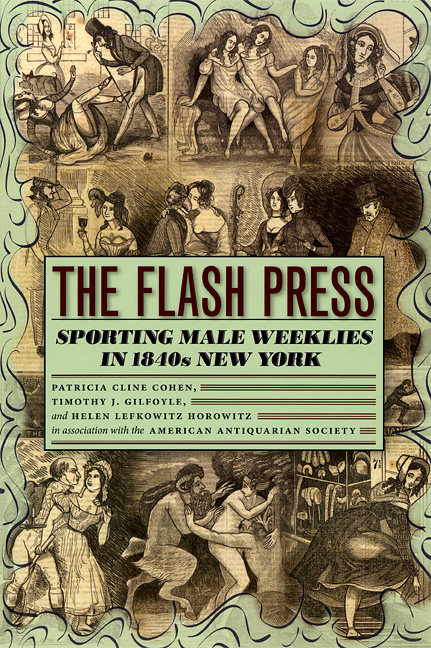“Sporting news, theater gossip, humor, and not a little pornography”

Hugely popular in nineteenth century New York, “flash” papers—weeklies like the Flash and the Whip—capitalized on lurid tales of New York City’s extensive sexual underworld. But, due in part to the evolution of obscenity laws and libel, their success was short lived and the papers themselves fell into obscurity. Now, as Chronicle of Higher Education reviewer Kacie Glenn notes, the authors of The Flash Press: Sporting Male Weeklies in 1840s New York have produced a comprehensive historical document of both the tumultuous history of the papers, and the culture that consumed them. Glenn writes:
The Flash Press: Sporting Male Weeklies in 1840s New York, written in association with the antiquarian society by Patricia Cline Cohen, a professor of history at the University of California at Santa Barbara; Timothy J. Gilfoyle, a professor of history at Loyola University Chicago; and Helen Lefkowitz Horowitz, a professor of American studies and history at Smith College, has two parts: a critical analysis of the papers’ role in society and a collection of excerpts.
The average flash-press reader was both a man about town and a respectable citizen, and the authors aim to decode the texts in light of those conflicting identities. “Ambiguity and deceit” were the rule, they say, so that the weeklies simultaneously celebrated and condemned promiscuity and high-society romps. The Flash Press traces the papers’ brief but turbulent run through the litigation and public outcry that eventually shut them down.…
Although the sporting weeklies were short-lived, First-Amendment victories for today’s risqué periodicals suggest that the earlier papers were ahead of their time. As the authors of The Flash Press note, “Seen from the perspective of the early 21st century, the editors of the flash press certainly have the last laugh.”